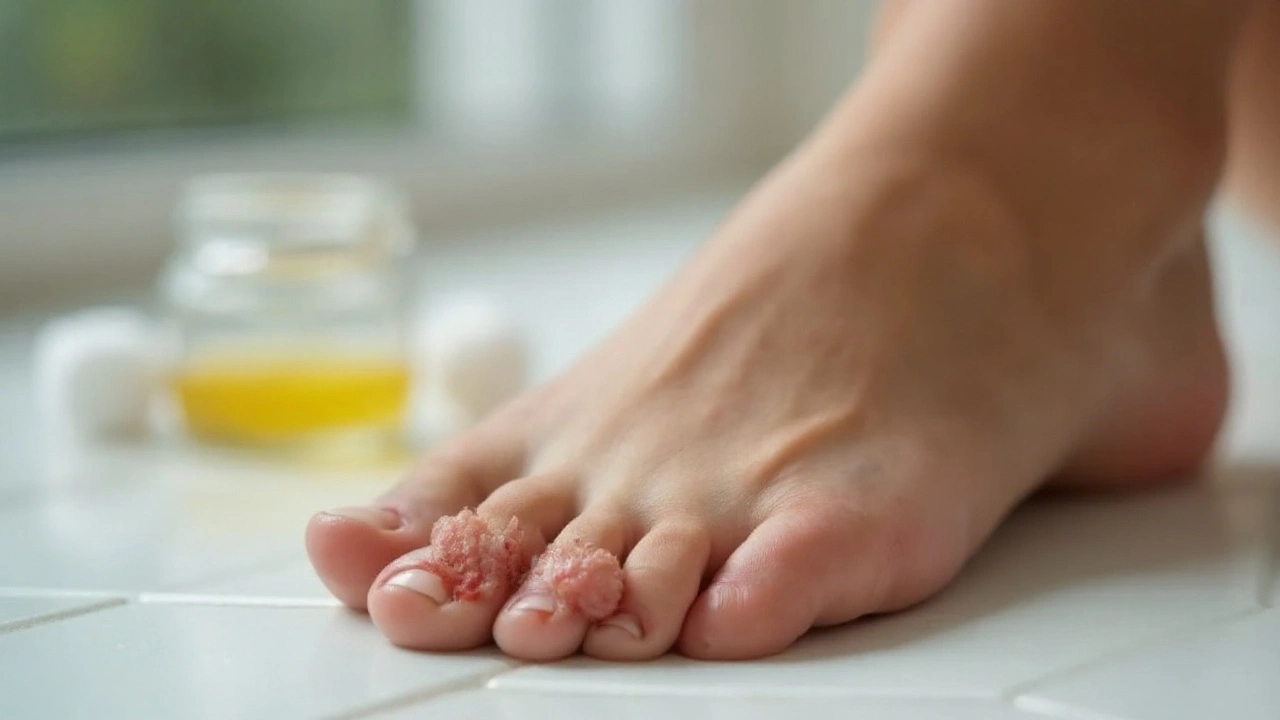Tinea Pedis (Athlete’s Foot): What You Need to Know
Ever notice itchy, flaky skin between your toes after a sweaty workout or a day at the beach? Chances are you’re dealing with tinea pedis, more commonly called athlete’s foot. It’s a harmless‑looking fungus that loves warm, damp places, and it can spread quickly if you don’t treat it right.
Symptoms & How It Spreads
The first sign is usually a mild itch or burning feeling on the bottom of the foot or between the toes. Within a few days the skin may turn white, peel, or develop tiny blisters that burst and leave raw patches. In some cases you’ll see a reddish ring‑shaped rash that spreads outward.
The fungus spreads through direct contact with infected skin or by walking on contaminated surfaces – think locker‑room floors, communal showers, or pool decks. Wearing tight shoes that don’t let your feet breathe creates the perfect breeding ground.
Easy Prevention Tips
Keep your feet dry. After a shower, towel them thoroughly, especially between the toes. Change socks at least once a day, and choose breathable cotton or moisture‑wicking fabrics.
Give your shoes a break. Rotate a pair of shoes every day so they can air out, and consider sprinkling a little antifungal powder inside them. If you use public showers, wear flip‑flops or shower shoes to avoid direct contact.
Quick Home Treatments
Over‑the‑counter creams, sprays, or powders containing clotrimazole, miconazole, or terbinafine work well for most cases. Apply the product to clean, dry skin twice a day for the full two‑week course, even if symptoms disappear sooner.
If the infection is stubborn, soak your feet in a solution of one part vinegar to four parts warm water for 15 minutes daily. The acidity helps kill the fungus and soothes irritation.
When to See a Doctor
If you notice the rash spreading to the soles, hands, or groin, or if you have diabetes or a weakened immune system, it’s best to get professional advice. A doctor can prescribe stronger oral antifungals that clear the infection faster.
Also, if you develop pus, severe pain, or the skin looks cracked and bleeds, seek medical help right away. Those signs may mean a secondary bacterial infection that needs antibiotics.
Key Takeaways
- Keep feet clean and dry; change socks often. - Use antifungal products for at least two weeks. - Protect feet in public showers with flip‑flops. - Seek a doctor if the infection spreads or worsens.
With these simple steps, you can kick tinea pedis to the curb and keep your feet healthy, comfortable, and ready for any activity.
Hydrocortisone for Athlete's Foot: Is It a Good Treatment?
Discover whether hydrocortisone can safely treat athlete's foot, how it works, when to use it, and what alternatives exist.
Read more